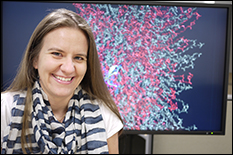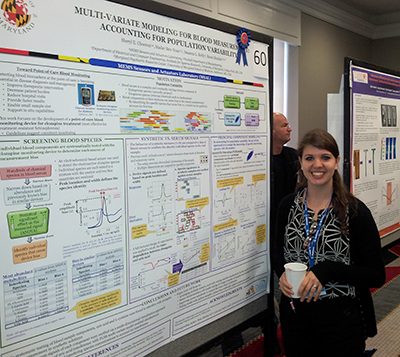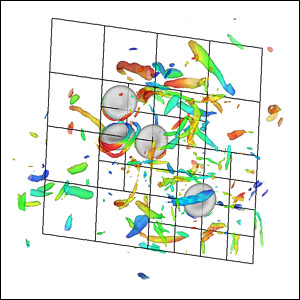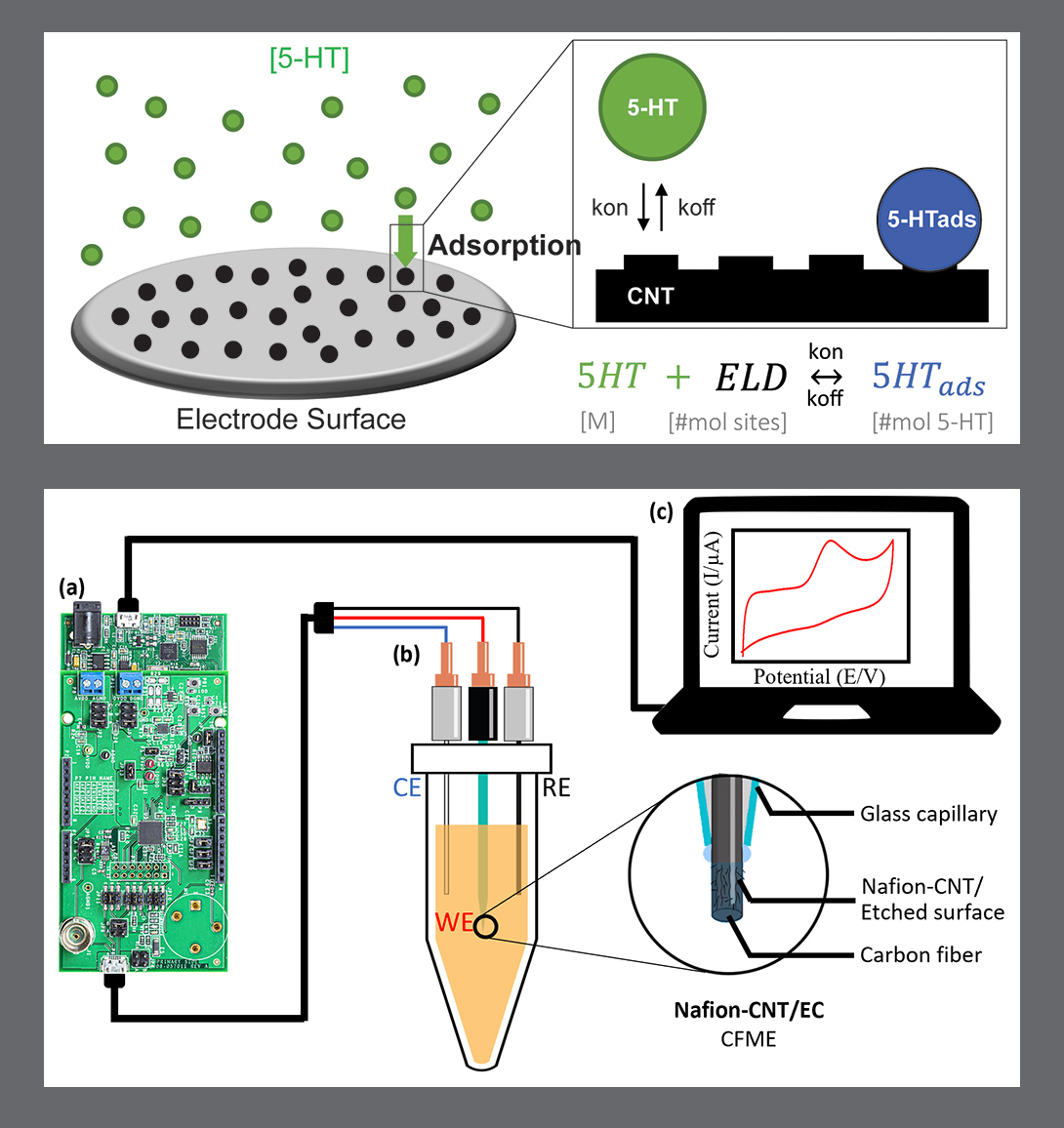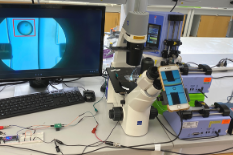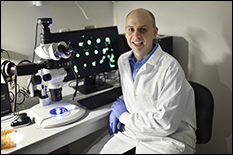News Story
Matysiak Named National Science Foundation CAREER Award Recipient
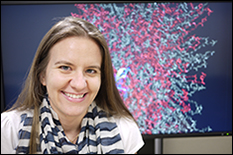
Fischell Department of Bioengineering (BioE) Assistant Professor Silvina Matysiak was selected for a five-year, $650,000 National Science Foundation (NSF) Faculty Early Career Development (CAREER) award for her efforts to advance the understanding of degenerative diseases and how molecular behavior dictates macroscopic-scale properties of biological systems.
While many of today’s most common diseases are caused by bacteria or viruses, neurodegenerative diseases such as Alzheimer’s, Parkinson’s, and Huntington’s result from what is known as protein misfolding – instances in which proteins fail to fold into their normal configuration and thereby disrupt the function of cells, tissues, and organs of the body. Additionally, certain types of breast cancer and Type 2 diabetes have been linked to protein misfolding.
Many misfolding diseases share the same mechanism of development in that each results from an abnormal aggregation of peptides – short chains of amino acids – and proteins on cellular membranes. While researchers are still working to uncover exactly what triggers pathogenic protein-protein and protein-membrane interactions, Matysiak and the members of her Biomolecular Modeling Laboratory are hopeful that improved understanding of such interactions will provide clues on how bioengineers could design better therapeutics to inhibit toxic peptide aggregation to treat or prevent misfolding diseases.
“Let’s say a bioengineer is looking to develop therapeutics for a specific misfolding disease and they understand the exact peptide aggregation process for that disease,” Matysiak said. “The bioengineer could say, ‘The protein is following these steps,’ and he or she could design a drug to address the middle step [of the peptide aggregation process] rather than design a drug that can only be used once the disease has already developed.”
But, in order to reach that point, researchers must first understand the factors that cause toxic peptide aggregation.
Research has shown that the presence of certain lipids in membranes can affect peptide aggregation pathways. Membrane lipids are compounds – structurally similar to fats and oils – which form the double-layered surface of all cells. While the arrangements of lipids and various proteins are necessary to control the entry and exit of other molecules and ions as part of the cell’s metabolism, the amount of certain lipids – such as anionic lipids and cholesterol – in membranes is known to influence toxic peptide aggregation.
In studying biological systems, one of the main challenges bioengineers like Matysiak face is what is known as the time-scale and length-scale gap between computational and experimental methods. Currently, there is no single experimental technique that can span the whole range of typical time and length scales relevant for biomolecular function and self-assembly behavior.
That is why Matysiak and her colleagues look to molecular modeling to understand biological systems.
“Molecular simulations can help fill the gap of knowledge by providing a mechanistic view of how peptide-lipid interactions shape peptide aggregation pathways,” Matysiak said. “The advantage of using biomolecular modeling [rather than wet lab experiments] to study protein misfolding is that we can look at all the steps of the aggregation process and predict outcomes that have not been observed experimentally.”
But, while typical molecular modeling processes provide descriptions of biological systems with all-atom detail, they are also impacted by simulation time and system size limitations.
Recognizing this, Matysiak’s lab is using a technique known as coarse-grained modeling, which allows researchers to represent a system by a reduced number of degrees of freedom relative to the all-atom level of resolution. As a result, Matysiak and her colleagues are able to achieve the right timescales for monitoring the evolution of individual molecules while they self-assemble. This provides Matysiak and her fellow researchers with mechanistic insights on how membranous surfaces can shape peptide aggregation. Additionally, coarse-grained models allow Matysiak’s lab to understand which interactions are essential and which ones can be approximated. By reducing the level of resolution, coarse-grained models decrease the computational requirements, which are commonplace in atomistic simulations.
Matysiak’s lab recently developed a protein model able to capture secondary structural changes depending on the sequence of amino acids and solution environment, such as water or oily phases. As part of her NSF CAREER Award research, Matysiak will utilize this model and couple it to membrane models to explore how the presence of certain lipids can promote peptide recruitment, misfolding and aggregation.
“The models our lab develops will open the door to explore – with computer simulations – how proteins fold in a membrane and the mechanism by which disruptor molecules, such as certain peptides, destabilize cell membranes,” Matysiak said. “Understanding how lipids can shape a peptide aggregation landscape can provide clues on the molecular basis of many diseases.”
Along with her contributions to the field of biomolecular modeling, Matysiak was also recognized with the NSF CAREER Award for her ongoing efforts to promote research exposure and awareness of career opportunities incorporating chemistry, modeling, and bioengineering. Since joining the Fischell Department of Bioengineering in October 2010, Matysiak has given many talks about biophysical modeling and provided opportunities for high school students to take part in hands-on learning activities made possible through the Women in Engineering (WIE) Students with Potential and Interest, Considering Engineering (SPICE) and Exploring Engineering (E2@UMD) camps.
Moving forward, Matysiak will work to provide application-based lessons for Montgomery College, a community college located just 20 miles from the UMD campus in College Park, Md.
Additionally, Matysiak will conduct outreach to parents and their children through family activities that will help spark an interest and understanding of why biophysical modeling is relevant to society.
“Parents are vital in an adolescent’s career choice. By involving them, the goal is to create awareness of a career field most likely unknown to them,” Matysiak said, noting that her first exposure to the interactive aspects of modeling and simulations is largely what inspired her own career path.
“If you look at other engineering disciplines such as aerospace engineering or mechanical engineering, researchers often use modeling before they carry out any type of experiment or before they design something,” she said. “In bioengineering, we’re not quite there yet given the complexity of biology– we don’t yet use modeling as often as researchers in the other disciplines. But, it’s only a matter of time until modeling allows us to have a deeper understanding of all the biomolecular processes taking place in our bodies.”
Published August 31, 2015

